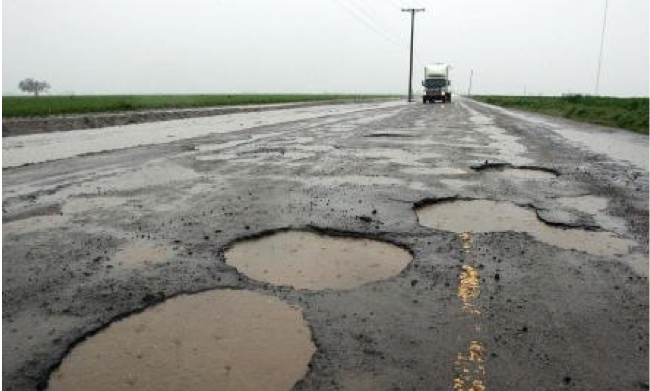CommentsNEW GEOGRAPHY--California may never secede, or divide into different states, but it has effectively split into entities that could not be more different. On one side is the much-celebrated, post-industrial, coastal California, beneficiary of both the Tech Boom 2.0 and a relentlessly inflating property market. The other California, located in the state’s interior, is still tied to basic industries like homebuilding, manufacturing, energy and agriculture. It is populated largely by working- and middle-class people who, overall, earn roughly half that of those on the coast.
Over the past decade or two, interior California has lost virtually all influence, as Silicon Valley and Bay Area progressives have come to dominate both state politics and state policy. “We don’t have seats at the table,” laments Richard Chapman, president and CEO of the Kern Economic Development Corporation. “We are a flyover state within a state.”
Virtually all the polices now embraced by Sacramento — from water and energy regulations to the embrace of sanctuary status and a $15-an-hour minimum wage — come right out of San Francisco central casting. Little consideration is given to the needs of the interior, and little respect is given to their economies.
San Francisco, for example, recently decided to not pump oil from land owned by the city in Kern County, although one wonders what the new rich in that region use to fill the tanks of their BMWs. California’s “enlightened” green policies help boost energy prices 50 percent above those of neighboring states, which makes a bigger difference in the less temperate interior, where many face longer commutes than workers in more compact coastal areas.
The new Bantustans
Fresno, Bakersfield, Ontario and San Bernardino are rapidly becoming the Bantustans — the impoverished areas designed for Africans under the racist South African regime — in California’s geographic apartheid. Poverty rates in the Central Valley and Inland Empire reach over a third of the population, well above the share in the Bay Area. By some estimates, rural California counties suffer the highest unemployment rate in the country; six of the 10 metropolitan areas in the country with the highest percentage of jobless are located in the central and eastern parts of the state. The interior counties — from San Bernardino to Merced — also suffer the worst health conditions in the state.
This disparity has worsened in recent years. Until the 2008 housing crash, the interior counties served, as the Kern EDC’s Chapman puts it, as “an incubator for mobility.” These areas were places that Californians of modest means, and companies no longer able to afford coastal prices, could get a second shot.
But state policies, notably those tied to Gov. Jerry Brown’s climate jihad, suggests Inland Empire economist John Husing, have placed California “at war” with blue-collar industries like homebuilding, energy, agriculture and manufacturing. These kinds of jobs are critical for regions where almost half the workforce has a high school education or less.
Why the interior matters
In legislating against the interior, the state is trying to counter the national trend — evident in the most recent census numbers — that shows people seeking less dense, more affordable areas. Both millennial and immigrant populations are growing rapidly in these regions. Between 2000 and 2013, the Inland region experienced a 91 percent jump in its population with bachelor’s degrees or higher, a far more rapid increase than either Orange or Los Angeles counties.
By curtailing new housing supply, California is systematically shutting off this aspirational migration. Chapman University forecaster James Doti notes that, in large part due to regulation, Inland Empire housing prices have jumped 80 percent since 2009 — almost twice the rate for Orange County. Doti links this rapid rise to helping slow the area’s once buoyant job growth in half over the past two years. Population growth has also slowed, particularly in comparison to a decade ago.
Weighed down by coastal-imposed regulations, the interior is losing its allure for relocating firms. Many firms fleeing regulation, high taxes and housing costs used to head inland. Now, many are migrating to Nevada, Texas, Arizona and other states. “Many of the projects we saw years ago have surfaced in Phoenix,” lamented Mary Jane Ohlasso, assistant executive officer for San Bernardino County, in an interview. “The whole way California has grown has been hopelessly terminated,” she told me.
Over time, however, constraining the interior will backfire on the coastal enclaves. In recent weeks, coastal technology and professional service providers have raised a growing alarm about attracting and retaining thirtysomething skilled workers. Some have even suggested that new transportation infrastructure — for example, a tunnel between Corona and south Orange County — could provide an alternative for family-aged workers who cannot afford a residence closer to the coast. Others, to keep key employees, are purposely setting up offices in places like San Antonio for workers entering their thirties.
If this crisis of the interior is not addressed, the prognosis for California will be ever-growing class and race bifurcation and an ever-rising demand for welfare and other subsidies for those unable to pay for housing. California needs, in reasonable and sustainable ways, to keep open its regions of opportunity, not to seek to close them off to future generations.
(Joel Kotkin is the editor of New Geography … where this piece was most recently posted … and is R.C. Hobbs Presidential Fellow in Urban Futures at Chapman University in Orange and executive director of the Houston-based Center for Opportunity Urbanism. Wendell Cox is principal of Demographia, a St. Louis-based public policy firm, and was appointed to three terms on the Los Angeles County Transportation Commission.)
-cw
Sidebar
Our mission is to promote and facilitate civic engagement and neighborhood empowerment, and to hold area government and its politicians accountable.

 CityWatch Los Angeles
Politics. Perspective. Participation.
CityWatch Los Angeles
Politics. Perspective. Participation.
14
Sun, Dec













